The Potemkin villages myth EXPOSED
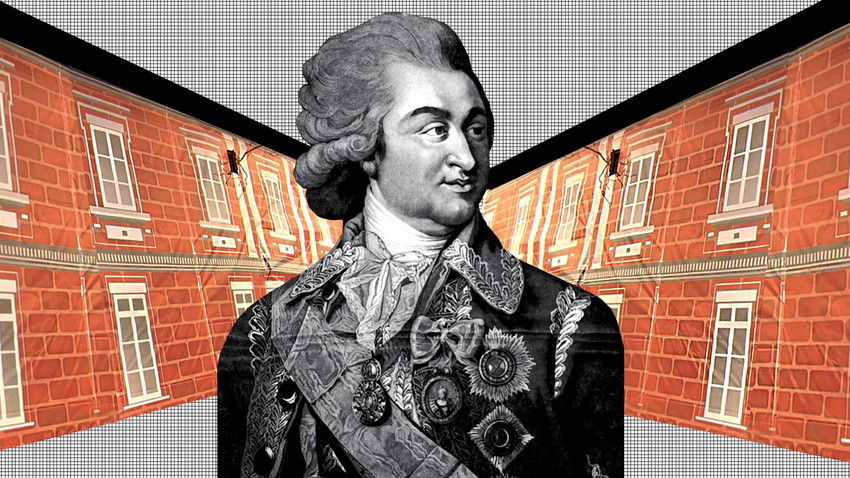
The expression ‘Potemkin villages’ means anything made for the sole purpose of concealing the truth. The legend goes that during Catherine the Great’s journey to Crimea in 1787, Grigoriy Potemkin, the man behind the project of making Crimea part of the Russian Empire, ordered fake villages to be put up quickly alongside the Empress’s road. Freshly erected shiny buildings with newly painted facades, inhabited by happy peasants (brought in from Central Russian villages) were designed to conceal the real state of events – poverty and ruin. Let’s see how this myth came about.
The sources
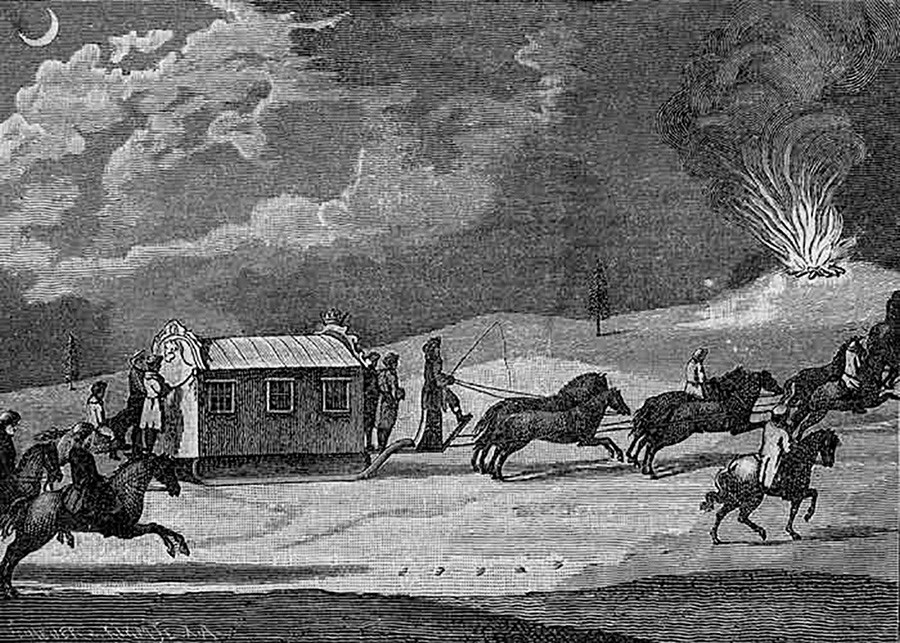
Catherine the Great's sled carriage on her journey to Crimea
German GoppeThe myth of ‘Potemkin villages’ wasn’t even written during Catherine’s Crimea journey. Georg von Helbig, the secretary for the Saxon embassy at Catherine’s court, came to Russia in 1787, but was not on the journey. Between 1797 and 1800, Helbig published Grigoriy Potemkin’s biography, where, summarizing the rumors he had heard in Petersburg during his stay in Russia, Halbig mentioned artificial villages, bags of ‘wheat’ filled with sand, vast herds of animals that were really one and the same herd, shown to the Empress multiple times, and so on.
Johan Albrecht Ehrenström, a Finnish politician who came to Russia in 1788, also (many years later) mentioned in his memoirs the same ‘false’ herds and villages ‘painted on wooden screens.’ Finally in the 1840s, the legend was again repeated in the Marquis de Custine’s “Russia in 1839,” a propaganda work full of myths and inaccuracies, which became world famous.
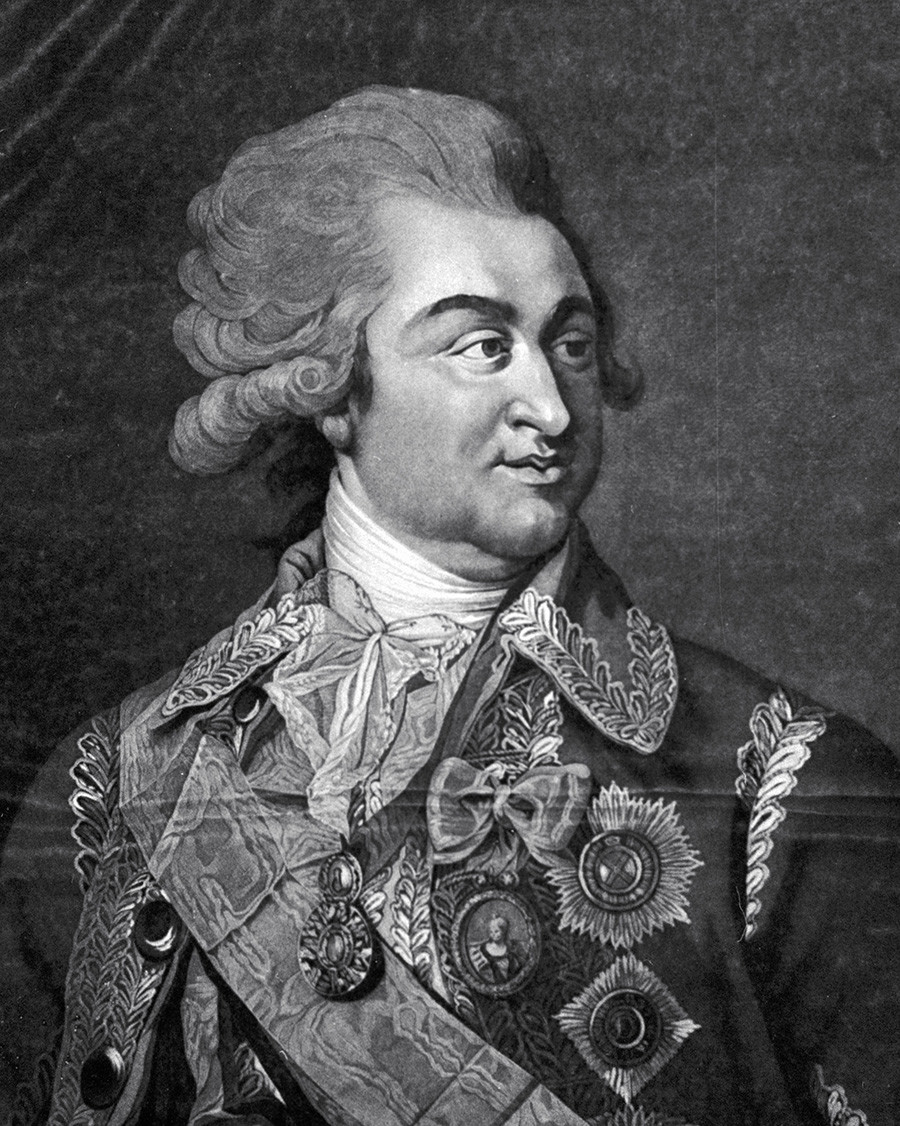
Prince Grigoriy Potemkin
I. Nosov/SputnikMeanwhile, Charles-Joseph, Prince de Ligne (1735-1814), who had actually been present during Catherine’s voyage, called the rumors about fake villages absurd. But De Ligne was a long-time associate of Potemkin, so his information may be unreliable. But then, so may be the information supplied by the Finnish and Saxonian politicians, who would only profit from any denigration of Catherine and her politics. What was there in reality?
The reality
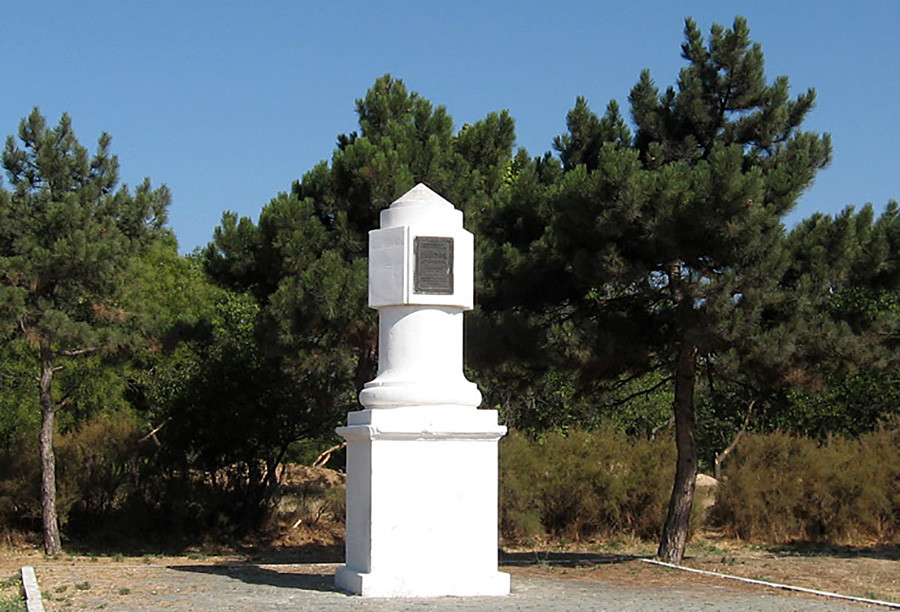
The "Catherine's Milestone," one of the remaining road signs dedicated to Catherine's Crimean journey
Vodnik/(CC BY-SA 3.0)The rumors that on Catherine’s journey to Crimea, there were going to be false villages, circulated even before her departure! Alexander Panchenko, Russian historian, notes that Alexander Khrapovitsky, Catherine’s secretary, wrote in his diary in April 1787, while Catherine and her suite were in Kiev, that the Empress was in a hurry to leave to Novorossiya (a new governorate that included Crimea), “not minding the unreadiness of Prince Potemkin, who delays the departure.”
Was Potemkin preparing some ‘shows’ for Catherine? Indeed, he was – take, for example, the story of the Amazon Company, a fictitious military formation set up exclusively for Catherine’s entertainment.
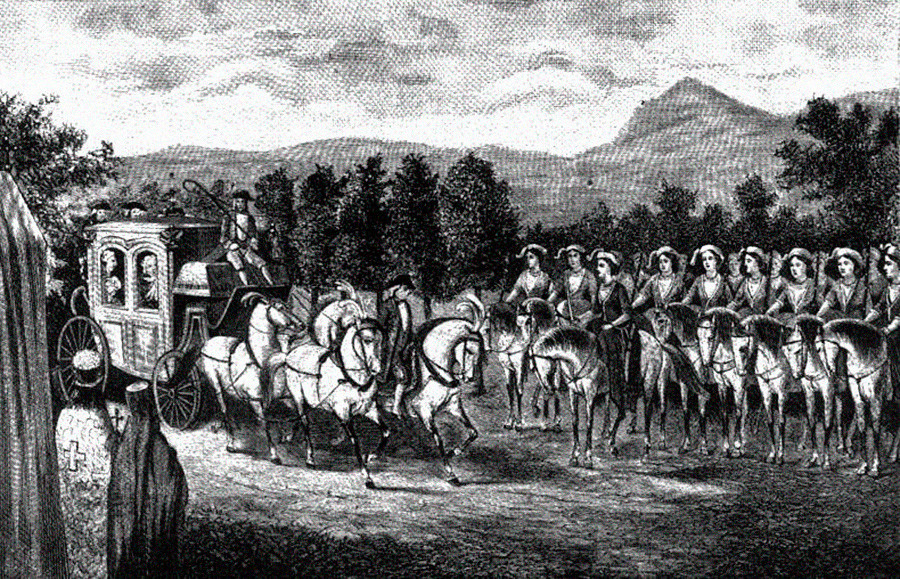
The Amazon Company salutes Catherine the Great
Public DomainEnormous sums were spent on fireworks, better to say fully-fledged fire shows. Even Emperor Joseph II (1741-1790), who joined the Crimean voyage under the moniker of ‘Count Falkenstein,’ was in awe on seeing Catherine’s monogram lit up in 55,000 lights.
And yes, Potemkin ordered villages to be decorated. Louis Philippe, Comte de Ségur (1753-1830), also present during the Crimean voyage, wrote: “Towns, villages, estates, and sometimes simple huts were so decorated with flowers, painted backdrops, and triumphal gates, that they appeared as some miraculous cities, castles created magically, amazing gardens...”
And Potemkin’s investment into Crimean development was impressive. Guglielmo Costantino Ludolf (1759-1839), an Italian diplomat, wrote: “You may think Kherson is a desert, think again… Eight years ago, there was almost nothing here... Prince Potemkin has thrown 8 million rubles at the construction of this city.”
We can conclude that during the journey, no ‘Potemkin villages’ were seen, instead the foreigners were in awe of the sums Potemkin spent on the development of the Crimea. Even Joseph II himself, after being asked by Catherine, if he liked what he’d seen, only bowed silently to the Empress. Then, who needed this kind of propaganda?
The aim of the legend
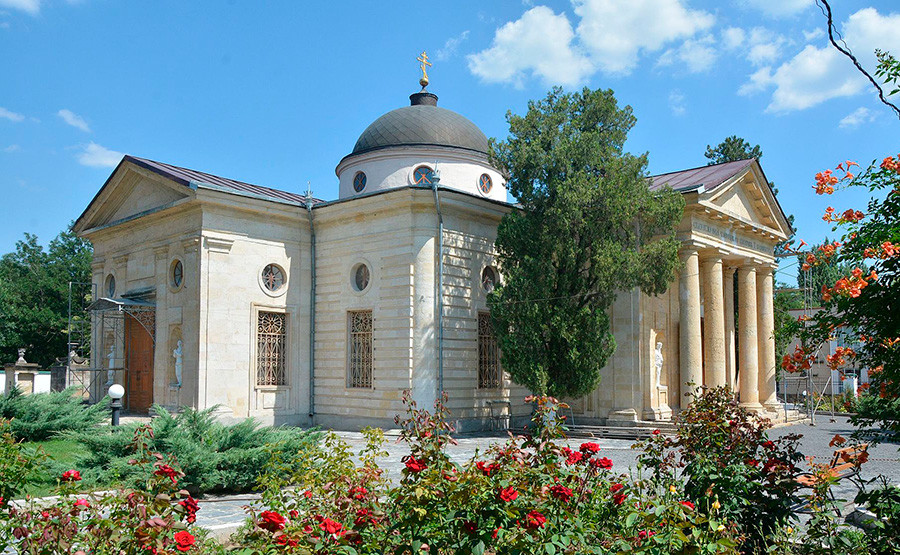
Saviour Cathedral of St.Catherine in Kherson, the burial site of Grigoriy Potemkin
Nataliya Shestakova/(CC BY-SA 4.0)Catherine’s Crimean voyage raised a lot of eyebrows in Istanbul – Crimea had not long before been a Turkish satellite state. The propaganda was actually aimed at the Turks. Both the Saxon and the Finnish diplomats, who spread the rumors about Potemkin building wooden facades of villages, wanted the Turkish military to believe the Russian Empire was really a weak state that could be easily crushed. The British envoy to Turkey, Sir Robert Ainslie, assured the Turkish government that Great Britain would support the Ottoman Empire in case of war with Russia. So Turkey demanded the Crimea to be returned to them and upon refusal, declared war on Russia.
The war (1787-1791) did not go well for the Ottoman Empire; its military didn’t enjoy a single victory over the Russians. Great Britain didn’t lift a finger to support Turkey; Sir Robert Ainslie left his service in Istanbul during the final years of the war. In 1791, Russia and Turkey signed the Treaty of Jassy that confirmed Crimea as a part of the Russian Empire.
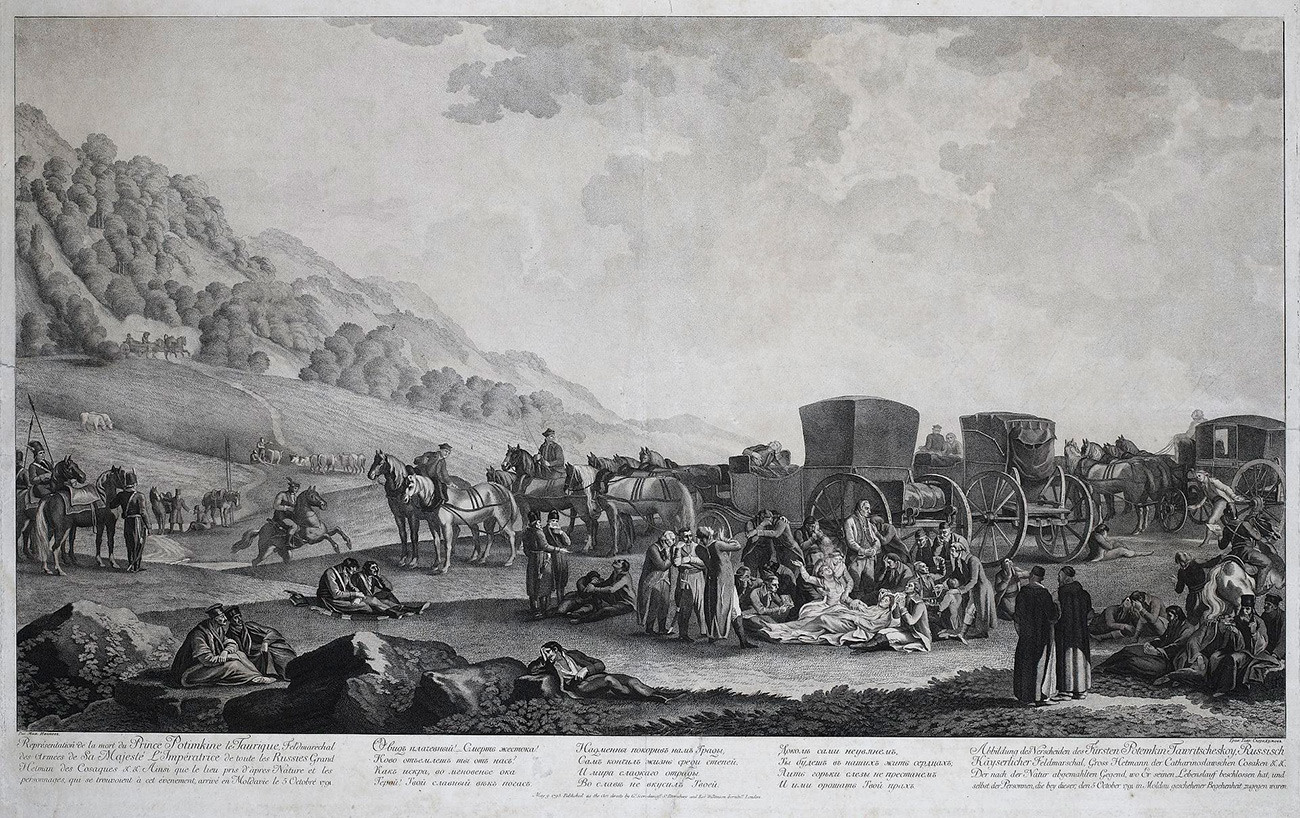
The death of Prince Grigory Potemkin in a Bessarabian steppe
Public domainIt turns out the myth about “Potemkin villages” was actually beneficial to Grigoriy Potemkin’s main project – the annexation of the Crimea for the Russian Empire. Potemkin died during the proceedings for the Treaty of Jassy, the final document to formalize his feat.
READ MORE: What was so ‘Great’ about Catherine?
Dear readers,
Our website and social media accounts are under threat of being restricted or banned, due to the current circumstances. So, to keep up with our latest content, simply do the following:
- Subscribe to our Telegram channel
- Subscribe to our weekly email newsletter
- Enable push notifications on our website
- Install a VPN service on your computer and/or phone to have access to our website, even if it is blocked in your country
If using any of Russia Beyond's content, partly or in full, always provide an active hyperlink to the original material.
Subscribe
to our newsletter!
Get the week's best stories straight to your inbox